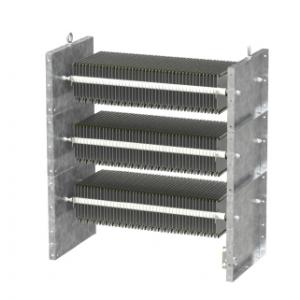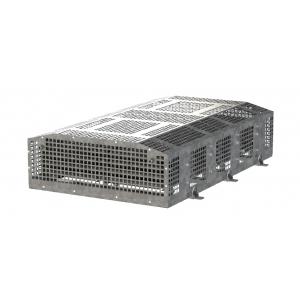Charging and discharging resistors
CHARGING A CAPACITOR BANK
A DC capacitor bank must be charged in a controlled manner to prevent damage to the rectifier bridge where high inrush currents could destroy components such as diodes or thyristors. Placing a resistor in the charging circuit limits this current and protects the semiconductors, avoid line-voltages sag in the case of a weak grid and prevent the capacitor voltage from over-shooting.
DISCHARGING A CAPACITOR BANK
The dangerous high voltage due to the energy stored in a capacitor bank needs to be discharged in a controlled way. Safety regulations require that dangerously high voltages must be below a safe voltage level within a certain time 8normally 1 or 2 minutes). A discharge resistor switched across the capacitor bank after the system is turned off, is a reliable and cost-effective way of ensuring this.
ENERGIZING A TRANSFORMER
When a transformer is energized for the first time, a magnetic field must be first be established in the core. For the first few cycles, the magnetizing current is limited only by the ohmic resistance and air-cored reactance of the primary winding. As soon as the magnetic field is established. The current decreases to that of the iron-cored reactance. To prevent such high inrush currents, “pre-magnetizing” resistors are inserted in the primary circuit and these are by-passed once the transformer is magnetized. Pre-magnetizing is essential when the energy grid is weak and utility regulations forbid high current peaks taken from supply

